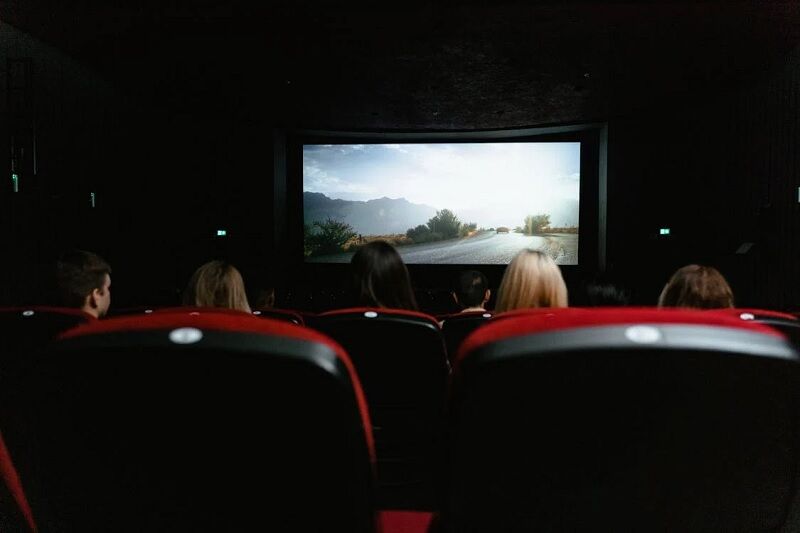Are people still going to movie theatres in Thailand?

In the age of streaming services and digital downloads, you might wonder if the charm of the big screen still holds its allure. Are people in Thailand still flocking to movie theatres? Let’s dive into the heart of Thailand’s cinema culture, and evaluate the current trends.
Despite the digital era’s convenience, there’s a unique experience that only cinemas can offer. Whether it’s the plush couches of Major Hollywood’s Sweet cinemas or the VIP treatment in Star auditoriums, Thai movie theatres are more than just a place to watch films.
However, there are plenty of challenges as well. From accessibility issues to the rapid online availability of new releases, Thai cinemas are in a constant battle to keep the audiences coming. So, are they succeeding? Let’s unravel this intriguing tale of Thailand’s cinema culture.
Current trends in Thai cinema attendance

Impact of streaming services
Internet availability’s surge has seen an increase in movie streaming, affecting Thai cinema attendance noticeably. With ease and convenience, streaming services provide viewing options, a shift observed worldwide. In the case of award-winning films, avid movie watchers find it quicker to stream online than wait for movie theatres in Thailand to showcase them.
While Thai movie theatres can’t compete with major cineplexes regarding accessibility—no nearby BTS or MRT stops, for instance—they retain a unique appeal for cinema enthusiasts. Despite the income being only enough to cover expenses, movie theatres continue to operate but must adapt to ensure they do not go out of business with all the competition at hand.
The movie industry in Thailand is more than just a medium for entertainment; it’s an event, a whole experience. No streaming service can replicate the traditional cinema vibe in the comfort of your own home. Yet, it’s undeniable that online viewing platforms have cornered a significant section of the market. Their effect on in-person theatre attendance forms a crucial part of cinematic culture dynamics today.
Effects of COVID-19
Like businesses worldwide, movie theatres in Thailand grappled with COVID-19’s unexpected blow. The pandemic amplified already brewing issues. Virus fear resulted in empty seats as people preferred to stay home, affecting cinemas’ income drastically.
However, this setback also paved the way for theatres to reconsider their approach, implement necessary safety measures, and adapt to unpredictable circumstances. Necessity, as they say, is the mother of invention, and this applies to cinema attendance trends too.
Although the changes brought by COVID-19 were challenging, coupled with the impact of streaming services, it has nudged Thai movie theatres towards innovation and survival in a digital era. Will these venues stand strong through testing times, maintaining their niche, is a captivating narrative in Thailand’s contemporary cinema culture.
Cultural aspects of watching movies in Thailand
Thailand, a country renowned for its rich culture and traditions, has an intriguing relationship with movie theatres. These aspects significantly influence the experience of moviegoers, sculpting a distinctive cinema culture that caters to residents and tourists alike.
Unique customs and practices
Thai cinemas boast more than standard cinema amenities. They incorporate local customs that provide audiences with a unique viewing experience. Prior to the start of every film, moviegoers stand to pay homage to King Bhumibol Adulyadej as the national anthem plays. This display of respect underscores the deep-seated cultural values of the Thai people.
Additionally, some cinemas, like those in Major Hollywood and Ramkhamhaeng, offer auditorium types to suit different preferences. For instance, the audience can choose between standard auditoriums, ‘Sweet’ cinemas designed for couples, and ‘Star’ cinemas offering a VIP experience with tableside food and beverage service. These selections reflect the Thai cinema industry’s desire to accommodate a range of audience experiences.
Film ratings and censorship
In Thailand, it’s also essential to note the influence of film censorship and ratings on the cinema culture. Following the guidelines set by the governmental agency for cinema and media, Thailand has a well-defined film rating system. These ratings categorise films based on viewer age appropriateness, guiding audience decisions on film choices.
The censorship regulations also play a crucial role in defining cinematic culture. These guidelines ensure that cinema content aligns with the country’s cultural norms and values. Therefore, the diversity of films shown in Thai movie theatres often varies, directly influenced by these cultural boundaries. In recent years, as the agency modernises its regulations, more diverse and controversial films are making their way to Thai movie theatres, indicating a shift in the cultural context of cinema consumption.
These unique customs and practices, combined with Thailand’s approach to film ratings and censorship, showcase the cultural aspects that shape the experience of watching movies in Thai movie theatres.
Accessibility and facility features

In this section, we delve into the makeup of movie theatres in Thailand, focusing specifically on language preferences, seating arrangements and how tickets are handled.
Language and subtitling in Thai cinemas
When visiting Thai cinemas, you’ll notice a variety of films from around the globe. Typically, it’s common to find English films with Thai subtitles. Conversely, Thai films or films from non-English speaking countries typically feature Thai subtitles. This includes popular Hollywood films, such as The Da Vinci Code, and hits from European regions. Interestingly, for Thai films, most cinemas in tourist centres incorporate English subtitles. This allows tourists to enjoy films despite any potential language barriers.
However, it’s important to note that as you move further away from major cities and touristy areas, English films or films with English subtitles become less common. Instead, you’ll find a dominance of Thai movies. Yet, even in these remote areas, one might discover movies from nearby countries such as Japan, South Korea, and Hong Kong. These films rarely have an English translation, but their presence speaks to the cultural diversity in Thailand’s movie theatres.
Seating and ticketing arrangements
Thailand’s movie theatre scene is both diverse and flexible, catering to a range of budgets and audience preferences. You’ll find cinemas such as the Enigma at Siam Paragon, which allows you to enjoy a premium experience akin to flying first class. Here, your 3,000 baht ticket gives you access to plush sofas, extra food before the show, and a touch of opulence in the lobby, making it an experience to remember.
However, not all cinemas in Thailand subscribe to this high-end experience. Some operate on a more affordable scale, providing an excellent cinema experience without breaking the bank. Remember, it’s not about being flashy, but appreciating the magic of movie theatres and the larger-than-life storytelling that they provide.
So, when you’re next in Thailand and fancy a movie, rest assured that the movie theatres cater to a wide range of preferences, ensuring you’ll find an experience that suits your language understanding, comfort, and budget. Just make sure to check the ticket prices, language, and subtitle options before booking.
Economic factors influencing cinema visits

Your decision to visit movie theatres can indeed be influenced by various economic factors. In Thailand, these largely centre around pricing trends and the value-added services provided by theatres, such as promotional offers and discounts.
Pricing trends
Over the past decade, there’s been a noticeable increase in ticket pricing in Thai movie theatres. The trend became more glaring on May 10, 2011, when Major Cineplex, a significant player in the market, raised their ticket prices without prior notice, catapulting them from the regular 100 baht to an unexpected 160-200 baht range. Following their decision, several other movie theatres trailed along this path, causing a ripple effect of shock and dissatisfaction among cinema-goers.
The revival of standalone cinemas in the last fifteen years, after suffering a blow from the rise of video and DVD, has again been drowned under the weight of the cinematic giants. These cineplexes, with an investment of at least 200–300 million baht on the stylish complexes, couldn’t afford to offer tickets at a lower price for fear of running out of business.
Promotional offers and discounts
In a bid to stay afloat and pull customers back to the theatre, several movie theatres in Thailand have adopted unique strategies. Introducing promotional offers and discounts to attract movie enthusiasts is among the popular solutions. However, these schemes often have conditions tacked on. They may be limited to certain movies, valid for a specific duration, or tethered to days with historically low patron turn-ups.
Bear in mind, that the long-term damage comes into play when the bombardment of advertisements takes the spotlight over the films themselves. The trade-off now involves sitting through approximately 30 minutes of commercials and movie trailers before the actual film begins. It’s at these instances that the charm of convenience steals the show, with audiences preferring to wait for films to reach their screens via the internet.
You can also check out the 10 best action films coming from Thailand, a particular example is Ong-Bak. The Thai Warrior is a 2003 martial arts action film that significantly elevated Tony Jaa’s international acclaim. This film exemplifies the vigorous Muay Thai techniques and intricate plotlines that Thai action films are globally renowned for. We highly recommend getting a glimpse of films from Thailand and experiencing the original display of films.
Latest Thailand News
Follow The Thaiger on Google News:


























